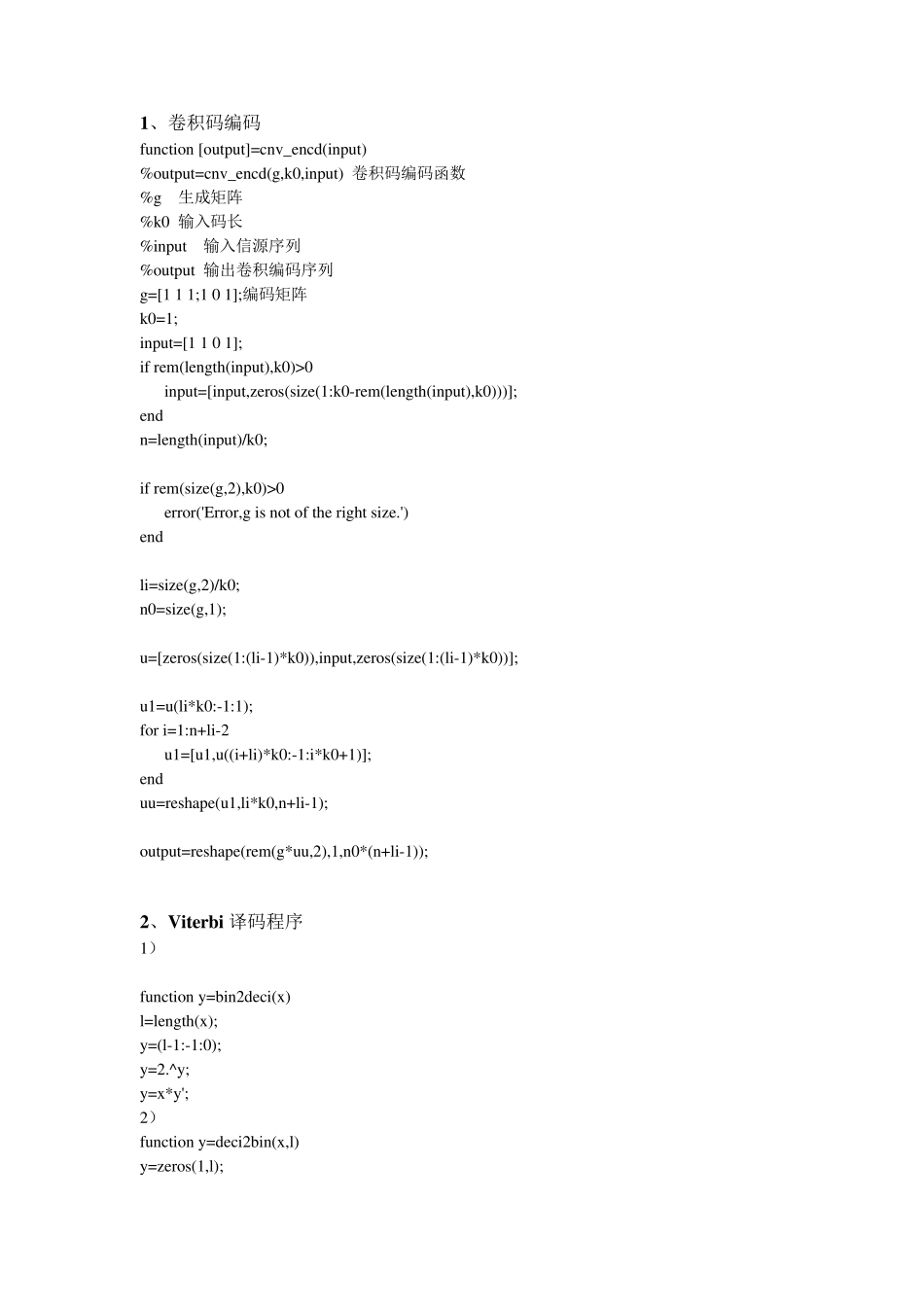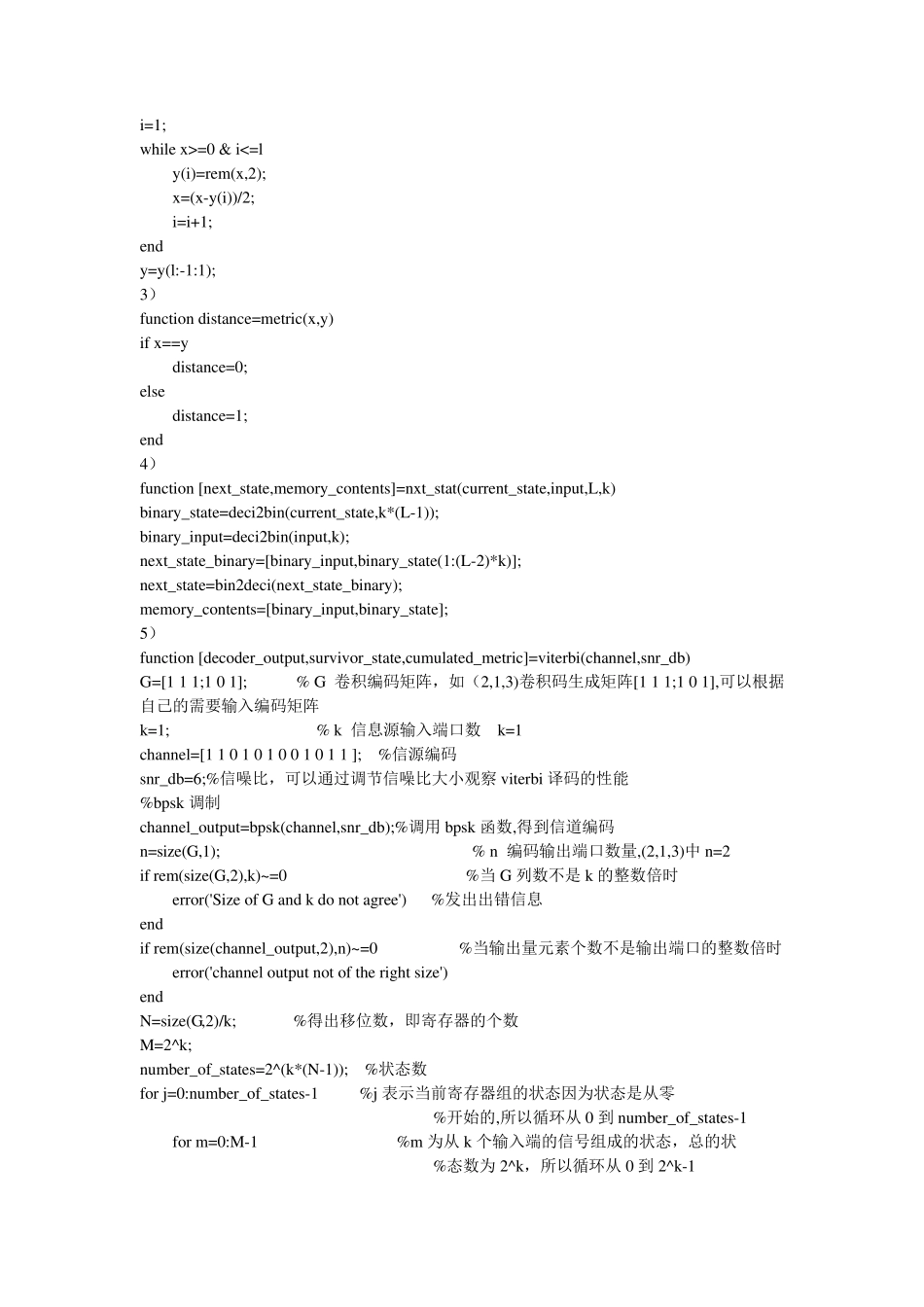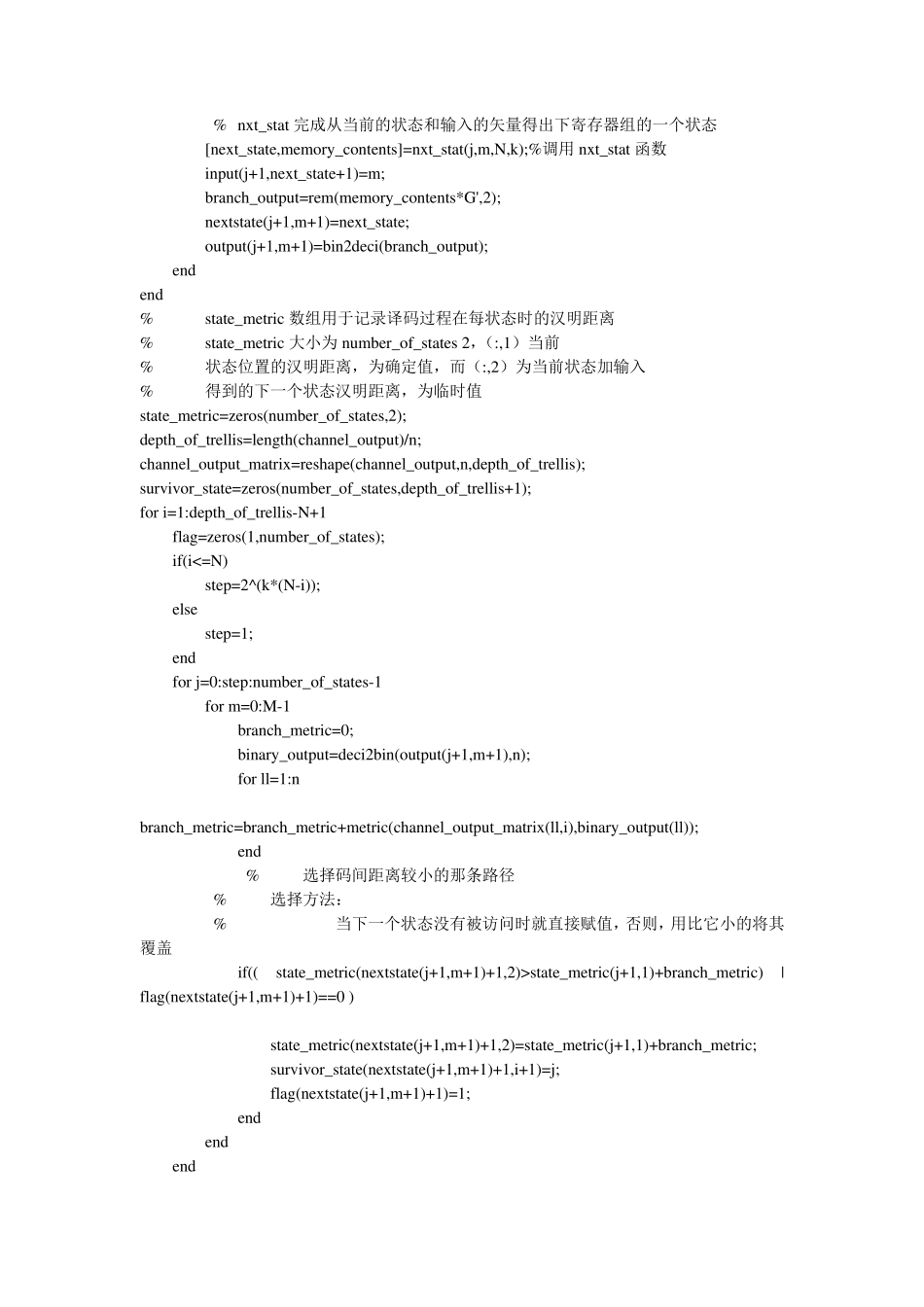1、卷积码编码 function [output]=cnv_encd(input) %output=cnv_encd(g,k0,input) 卷积码编码函数 %g 生成矩阵 %k0 输入码长 %input 输入信源序列 %output 输出卷积编码序列 g=[1 1 1;1 0 1];编码矩阵 k0=1; input=[1 1 0 1]; if rem(length(input),k0)>0 input=[input,zeros(size(1:k0-rem(length(input),k0)))]; end n=length(input)/k0; if rem(size(g,2),k0)>0 error('Error,g is not of the right size.') end li=size(g,2)/k0; n0=size(g,1); u=[zeros(size(1:(li-1)*k0)),input,zeros(size(1:(li-1)*k0))]; u1=u(li*k0:-1:1); for i=1:n+li-2 u1=[u1,u((i+li)*k0:-1:i*k0+1)]; end uu=reshape(u1,li*k0,n+li-1); output=reshape(rem(g*uu,2),1,n0*(n+li-1)); 2、Viterbi 译码程序 1) function y=bin2deci(x) l=length(x); y=(l-1:-1:0); y=2.^y; y=x*y'; 2) function y=deci2bin(x,l) y=zeros(1,l); i=1; while x>=0 & i<=l y(i)=rem(x,2); x=(x-y(i))/2; i=i+1; end y=y(l:-1:1); 3) function distance=metric(x,y) if x==y distance=0; else distance=1; end 4) function [next_state,memory_contents]=nxt_stat(current_state,input,L,k) binary_state=deci2bin(current_state,k*(L-1)); binary_input=deci2bin(input,k); next_state_binary=[binary_input,binary_state(1:(L-2)*k)]; next_state=bin2deci(next_state_binary); memory_contents=[binary_input,binary_state]; 5) function [decoder_output,survivor_state,cumulated_metric]=viterbi(channel,snr_db) G=[1 1 1;1 0 1]; % G 卷积编码矩阵,如(2,1,3)卷积码生成矩阵[1 1 1;1 0 1],可以根据自己的需要输入编码矩阵 k=1; % k 信息源输入端口数 k=1 channel=[1 1 0 1 0 1 0 0 1 0 1 1 ]; %信源编码 snr_db=6;%信噪比,可以通过调节信噪比大小观察viterbi 译码的性能 %bpsk 调制 channel_output=bpsk(channel,snr_db);%调用bpsk 函数,得到信道编码 n=size(G,1); % n 编码输出端口数量,(2,1,3)中n=2 if rem(size(G,2),k)~=0 %当G 列数不是 k 的整数倍时 error('Size of G and k do not agree') %发出出错信息 end if rem(size(channel_output,2),n)~=0 %当输出量元素个数不是输出端口的整数倍时 error('channe...


